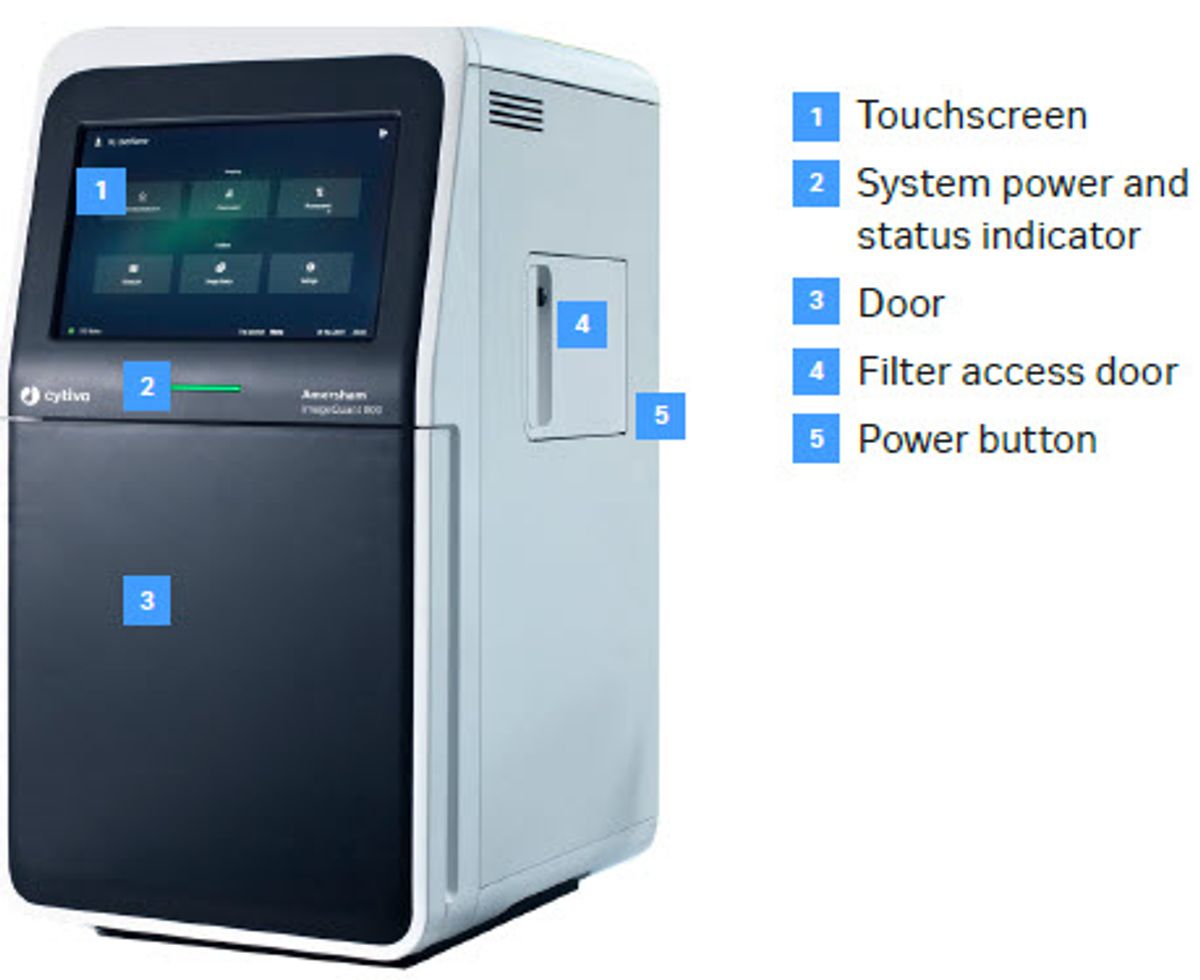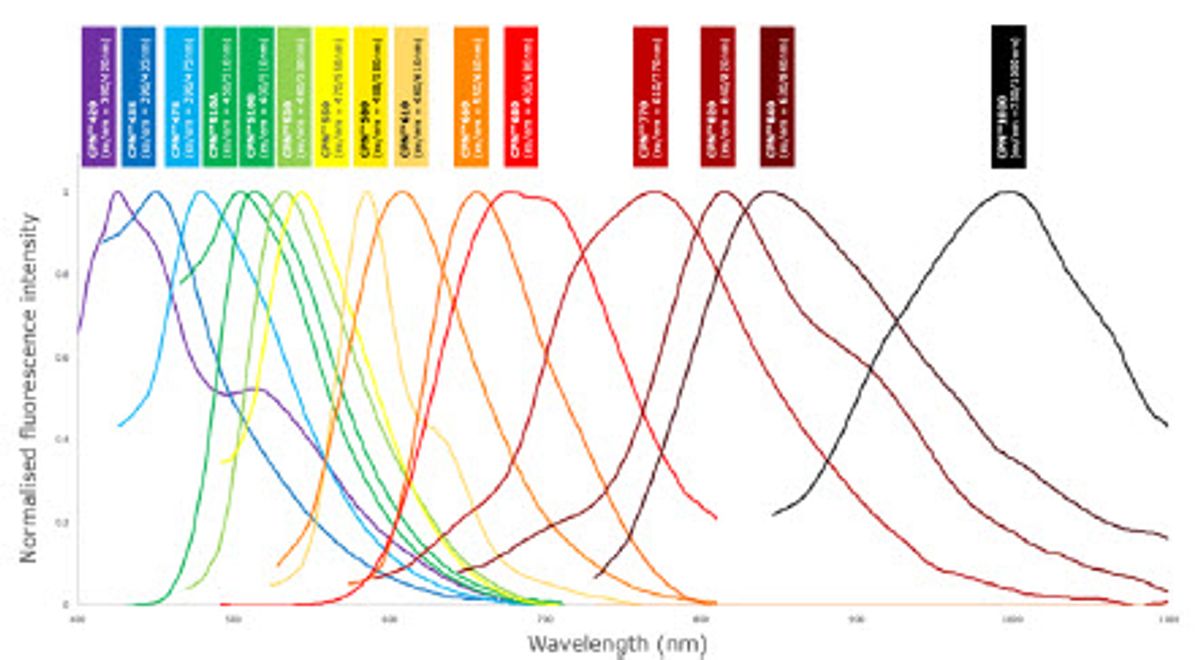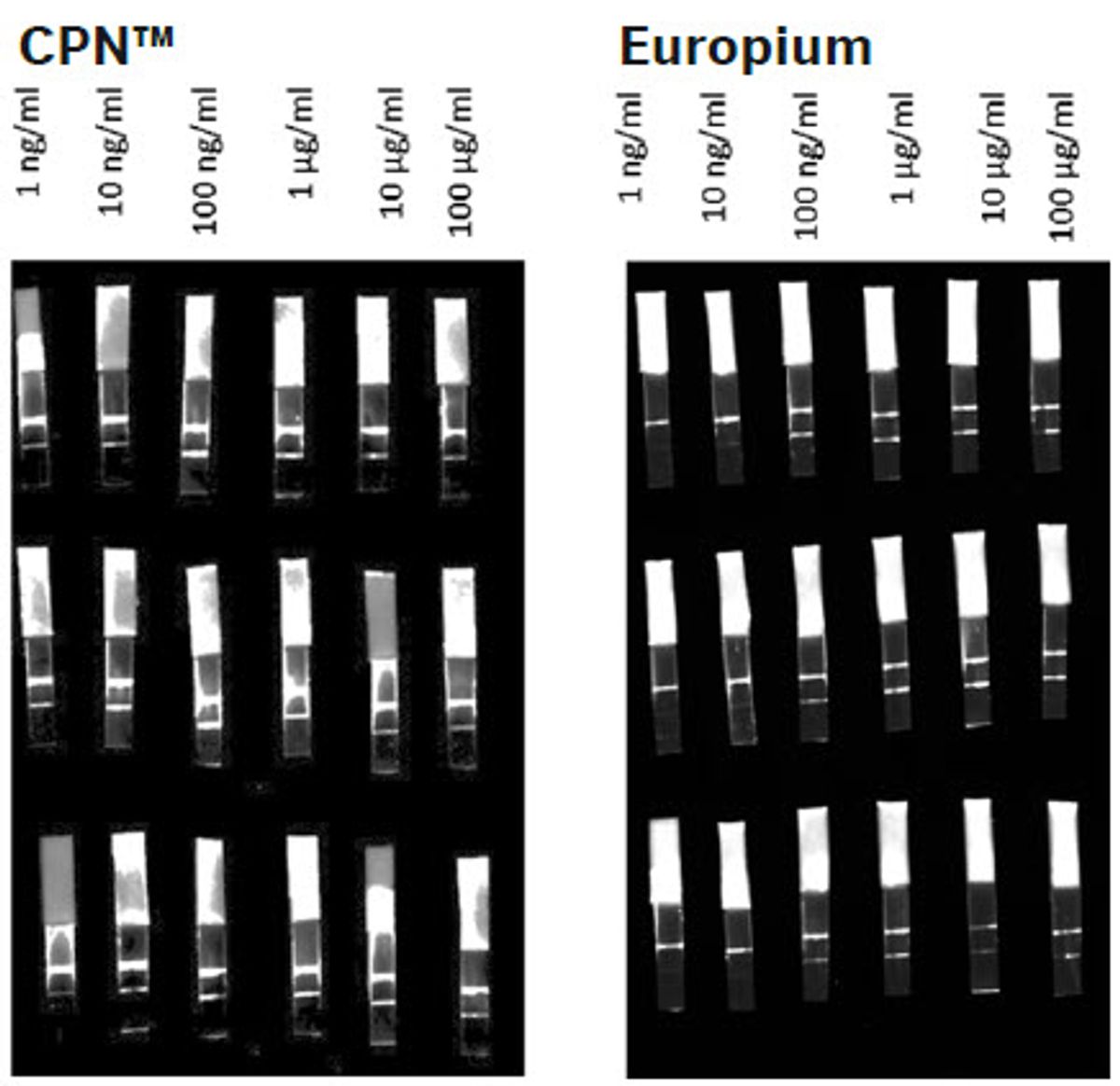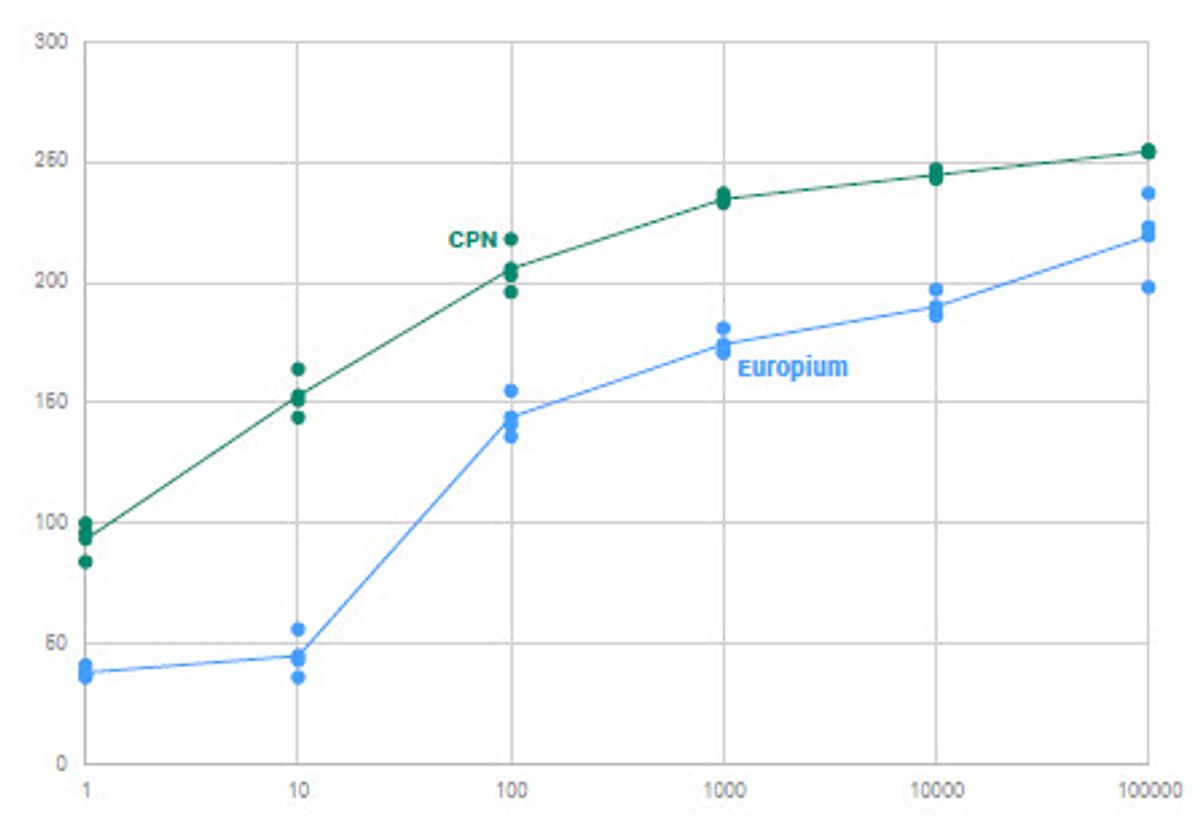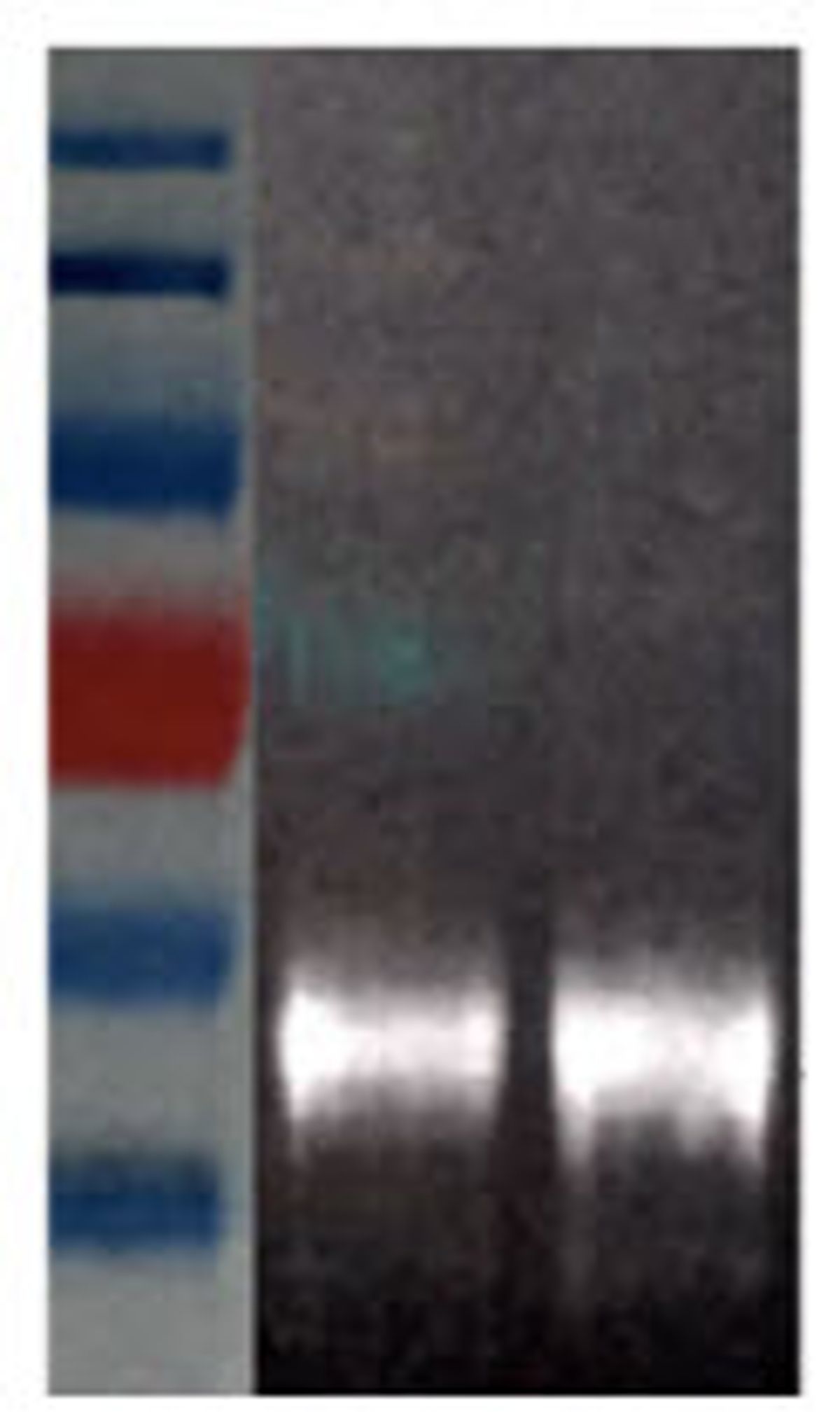IQ800-StreamBio-app-note-CY23037-18Oct21-WP (2) ImageQuant™ 800 for lateral flow assay development using dyes across the spectrum
Development of assays based on lateral flow has led to low cost and effective large-scale screening of infectious diseases with high specificity. Lateral flow assays consist of membranes, antibodies, and reagents for detection of a color change or fluorescent dye (Fig 1). Lateral flow assays are an area of intense research and have led to highly robust and sensitive products, including a range of Whatman™ diagnostic solutions from Cytiva. In this article we investigate the use of Conjugated Polymer Nanoparticles (CPNs™) Amersham™ ImageQuant™ 800 systems for lateral flow assays and Western Blotting.
Fig 1. Lateral flow assay architecture.
ImageQuant™ 800
During assay development it is important to optimize the detection step, either based on color or fluorescence detection. ImageQuant™ 800 is a CCD based imaging system for colorimetric and fluorescence imaging. It is equipped with six different types of LED lights and filters so users can image across the full spectrum. It also provides white light colorimetric imaging, both in epi- and trans- illumination mode. ImageQuant™ 800 allows the user to make any custom LED light and filter combinations for imaging of various dyes with different excitation and emission wavelengths including UV, RGB, and IR long and short wavelengths. Furthermore, the ImageQuant™ 800 can also accommodate custom filters from third parties making it ideal for any assay development work.
Fig 2. The ImageQuant™ 800 imaging system comes equipped with touchscreen, two tray positions, and an easy-access filter door.
Fig 3. Image across the full spectrum with the different LED light sources of the ImageQuant™ 800 Fluor imager.
Conjugated Polymer Nanoparticles (CPNs™)
Stream Bio CPNs™ are a new class of molecular bioimaging probes. The polymer material provides a high degree of photostability and highly specific targeting. CPNs™ together with a sensitive and flexible imaging system, such as the ImageQuant™ 800, provide the high sensitivity needed for a range of life science applications, including western blot, lateral flow rapid diagnostic tests and ELISAs.
Fig 4. Fluorescence emission spectra of CPNs™ from Stream Bio’s (spanning 420 nm to 1000 nm). CPNs™ fluorescence at specific wavelengths is due to the chemical composition. The excitation and emission characteristics of the CPNs™ are tailored by selecting specific conjugated polymers for the core.
CPNs™ in lateral flow assays for a strong, consistent signal
CPNs™ exhibit many useful characteristics for lateral flow assay development, including:
Fluorescence emission across a wide range of wavelengths from 420 to 1000 nm, with possible multiplexing
Bright and robust, with resistance to photobleaching
Contain iron oxide and can be moved using magnetic fields
Conjugated with well known surface chemistries, such as streptavidin-biotin, thiol-amine coupling, and “click” chemistry
Lateral flow strips for the detection of human Chorionic Gonadotropin (hCG) were tested in triplicate using concentration of hCG from 100 μg/mL to 1 ng/mL (Fig 5). The data from the test lines on the lateral flow strips were then plotted against the hCG concentration (Fig 6).
Fig 5. CPN610 or europium was used as detection agents by linking to anti-hCG detection antibodies. The strips were imaged using the ImageQuant™ 800 and the signal from the test and control lines analyzed to give a mean pixel intensity for each line. The image was captured using the Blue epi (460 nm) and Cy™3 UV filter for the CPN610 signal and UV epi (365 nm) and Cy™3 UV filter for the europium signal. White grayscale was used to indicate fluorescence signal, i.e., a high signal is shown as white in the image.
Fig 6. Multiple replicates show consistent strong signal from CPNs™ with higher sensitivity than Europium.
Detection of COVID spike proteins using CPNs™ and ImageQuant™ 800
CPN510B was used to detect spike protein targeting domain and to define the limit of detection for a COVID diagnostic assay. The full-length spike protein and its S1 and Receptor Binding Domains (RBD) of the virus SARS- CoV2 (causative agent of COVID-19) were spotted onto a nitrocellulose membrane (50 ng per spot). They were then probed with CPN510B covalently linked to an anti-spike protein molecularly imprinted polymer and imaged using the ImageQuant™ 800 (Fig 7). Strong signals were obtained from the full-length spike protein and S1 domain with the RBD giving a weaker signal.
The full-length spike protein from the SARS-CoV2 virus was then spotted onto a nitrocellulose membrane (Fig 8). The spots were then probed with CPN510B covalently linked to an anti-spike protein molecularly imprinted polymer and imaged using the ImageQuant™ 800. Signals could be detected at each concentration including 0.5 ng.
Fig 7. Nitrocellulose membrane spotted with 50 ng of full-length spike protein, S1, and RBD of the virus SARS-CoV2. The image was captured using the UV epi (365 nm) and Cy™2 (525BP20) filter for the CPN510B signal.
Fig 8. Nitrocellulose membrane spotted with varying concentrations of full-length spike protein from the SARS-CoV2 virus. The image was captured using the UV epi (365 nm) and Cy™2 filter for the CPN510B signal.
Detection in the IR region using ImageQuant™ 800
CPN™ performance in infrared regions was evaluated using ImageQuant™ 800. Lateral flow strips were tested with infrared emitting CPNs™ and imaged using various filter settings on the ImageQuant™ 800 (Fig 9). Fluorescent material has the characteristic of absorbing light at some wavelengths (excitation) and emitting light at other wavelength. With the combination of filters available on the ImageQuant™ 800 it is possible to see both the fluorescent signal (white line) and an absorbance signal (black line) against the grey background of the nitrocellulose strip. ImageQuant™ 800 filter sets can be selected to match the emission properties of the CPNs, such as CPN840 (ex/em = 650/840 nm).
Fig 9. Lateral flow strips were run using a range of infrared CPNs™ as detection agents and the strips were imaged using four different filter sets on the ImageQuant™ 800. White grayscale was used to indicate fluorescence signal, i.e., a high signal is shown as white in the image.
Fig 10. Mouse-anti-CD44 (500 ng 1 µg) was run on a PAGE gel and transferred to a nitrocellulose membrane. The membrane was probed with CPN840 linked to anti-mouse IgG which selectively bound, giving a bright signal at the expected size (150 kDa). The image was captured using the 660 nm IR short epi and 46 nm IR long (836BP) filter for the CPN840 signal. White grayscale was used to indicate fluorescence signal, i.e., a high signal is shown as white in the image.

CPNs™ and ImageQuant™ 800 for Western Blotting
The increase in sensitivity achievable with CPNs™ allow them to be used to probe Western blots linked directly to the primary antibody rather than using a labelled secondary antibody (Fig 11). This avoids incubation with the secondary antibody leading to significant time savings.
Fig 11. Nitrocellulose membrane was spotted with human chorionic gonadotropin (hCG) at 1 mg, 500 ng, and 250 ng. It was then probed with CPN610 linked to anti-hCG antibody or probed with a mouse anti-hCG antibody followed by QDot 565 linked to anti-mouse antibody. Signals at each amount of hCG were comparable. The image was captured using the UV epi (360 nm) excitation source and Cy™3 40 nm UV emission filter.
Conclusion
Assays using lateral flow methods have led to lower cost methods for large-scale screening of infectious diseases with high specificity. In this article we have shown several applications use of CPNs™ on the ImageQuant™ 800 for lateral flow assays and Western Blotting. ImageQuant™ 800 systems are ideal for evaluating sensitivity, dynamic range, and limits of detection for use of such fluorophores in lateral flow diagnostic assay development.
About Cytiva’s diagnostic assay development services
Cytiva Diagnostic Services helps you accelerate diagnostic assay development, from early-stage concept and prototype to manufacturing and commercialization.
Whether creating a custom magnetic bead, a specialized enzyme, or a diagnostic kit, our team in Cardiff, UK offers custom solutions including lyophilization, conjugation, contract manufacturing, custom biology, and custom plates. Our team in Dassel, Germany builds on our Whatman™ heritage of quality and innovation, providing access to our expertise, hands-on training, infrastructure and proven development methodologies for rapid diagnostic test design. Find out more.
About Stream Bio
Stream Bio develops and manufactures a range of bioimaging molecular probes that cover the visible and near infra-red spectrum: Conjugated Polymer Nanoparticles (CPNs™), for applications in Research & Development, in vitro diagnostic assays, and therapeutic research. Invented in the research labs of King’s College London, Stream Bio was founded as the vehicle through which to demonstrate the wide-ranging benefits and applications of CPNs™. Stream Bio’s technology is already making a positive impact on in vivo Research & Development, diagnostics, and therapeutics.
cytiva.com/IQ800
For local office contact information, visit cytiva.com/contact
Cytiva and the Drop logo are trademarks of Life Sciences IP Holdings Corporation or an affiliate.
Amersham and ImageQuant are trademarks of Global Life Sciences Solutions USA LLC or an affiliate doing business as Cytiva.
Coomassie is a trademark of Thermo Fisher Scientific. Windows is a trademark of Microsoft Corporation.
CPN, Stream Bio, Stream Bio logo are trademarks of Stream Bio.
All other third-party trademarks are the property of their respective owners.
© 2021 Cytiva
CY23037-18Oct21-AN






